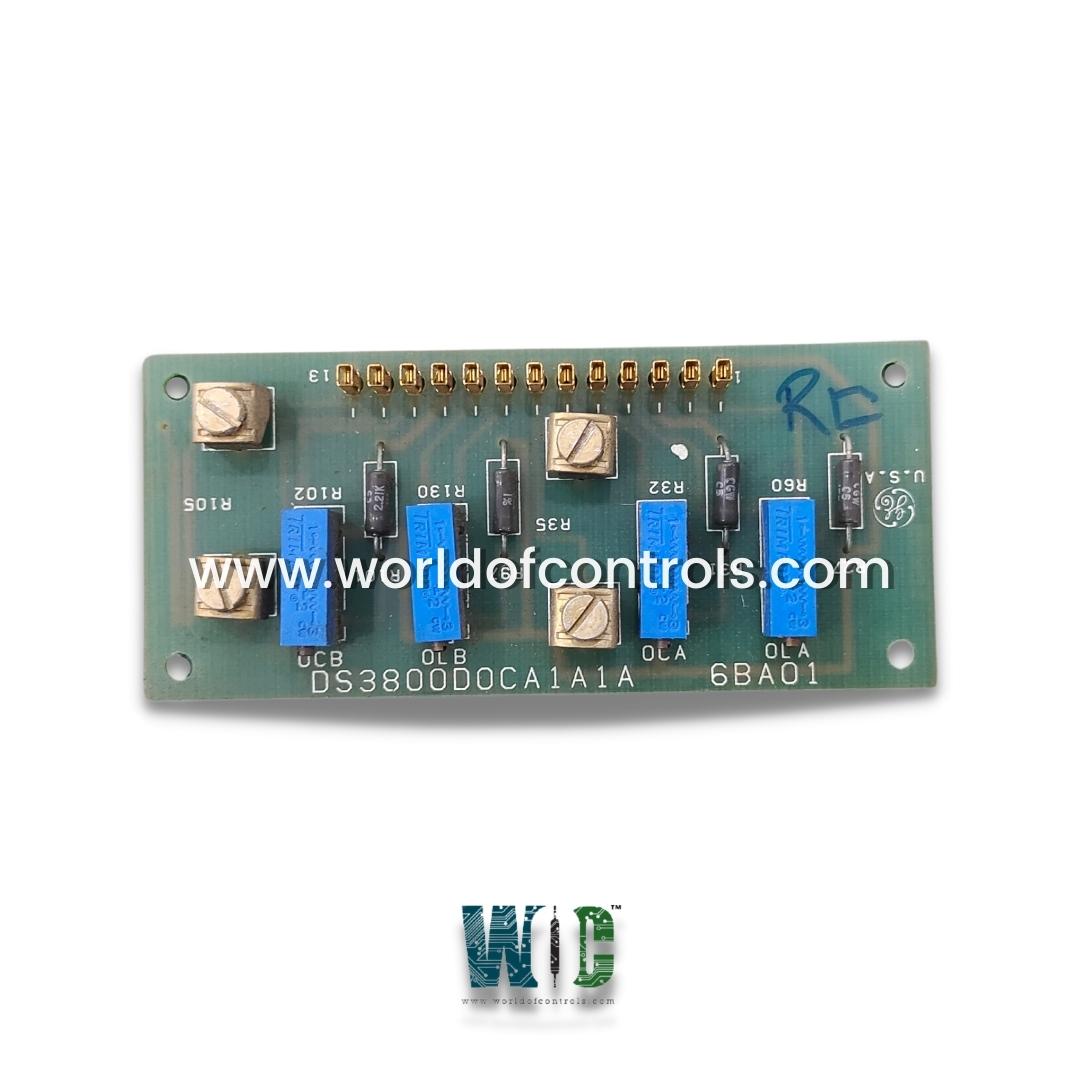
World Of Controls understands the criticality of your requirement and works towards reducing the lead time as much as possible.
DS3800DOCA1A1A - Digital Output Auxiliary Card is available in stock which ships the same day.
DS3800DOCA1A1A - Digital Output Auxiliary Card comes in UNUSED as well as REBUILT condition.
To avail our best deals for DS3800DOCA1A1A - Digital Output Auxiliary Card, contact us and we will get back to you within 24 hours.
SPECIFICATIONS:
Part Number: DS3800DOCA1A1A
Manufacturer: General Electric
Series: Mark IV
Product Type: Digital Output Auxiliary Card
Number of channels: 12
Input Pulse Rate: 10 Hz to 25 kHz
Input Voltage Range: 24 V dc
Operating temperature: -40 to +70°C
Size: 8.25 cm high x 4.18 cm
Repair: 3-7 Day
Availability: In Stock
Weight: 2 lbs
Country of Origin: United States
FUNCTIONAL DESCRIPTION:
DS3800DOCA1A1A is a Digital Output Auxiliary Card manufactured and designed by General Electric as part of the Mark IV Series used in GE Speedtronic Control Systems. A Digital Output Auxiliary Card, often referred to simply as a digital output card, is a hardware component designed to provide additional digital output channels for a computer or electronic system. Digital output refers to the generation of digital signals, typically in the form of binary signals (0s and 1s), that can be used to control external devices or systems. The primary purpose of a digital output auxiliary card is to expand the capability of a system to interact with and control various external devices such as relays, actuators, motors, lights, or other digital devices. These cards are commonly used in industrial automation, process control, and other applications where precise control over external equipment is required.
FEATURES:
Number of Channels: The card will specify the number of digital output channels it provides. Each channel can typically be independently controlled.
Voltage and Current Ratings: Specifications for the voltage and current levels that the card can handle. This is crucial to ensure compatibility with the devices it is intended to control.
Interface: The method through which the card communicates with the computer or control system. Common interfaces include PCI, PCIe, USB, or Ethernet.
Isolation: Some digital output cards provide isolation between the computer system and the external devices to protect against electrical noise and ensure stable operation.
Triggering and Timing: Features related to triggering signals and precise timing, essential in applications where synchronization or specific timing is critical.
WOC has the largest stock of GE Speedtronic Control System Replacement Parts. We can also repair your faulty boards. WORLD OF CONTROLS can also supply unused and rebuilt backed-up with a warranty. Our team of experts is available round the clock to support your OEM needs. Our team of experts at WOC is happy to assist you with any of your automation requirements. For pricing and availability on any parts and repairs, kindly get in touch with our team by phone or email.
What is a Digital Output Auxiliary Card?
A Digital Output Auxiliary Card is a hardware component designed to provide additional digital output channels for a computer or electronic system. It allows the system to control external devices such as relays, actuators, and motors by generating digital signals.
Where are Digital Output Auxiliary Cards used?
These cards are commonly used in industrial automation, process control, robotics, and other applications where precise control over external equipment is necessary. They play a crucial role in interfacing a computer or control system with digital devices in various industries.
How do Digital Output Auxiliary Cards connect to a computer or control system?
Digital Output Auxiliary Cards typically connect to a computer or control system through interfaces such as PCI, PCIe, USB, or Ethernet, depending on the card's design. The choice of interface depends on the application requirements and the compatibility with the host system.